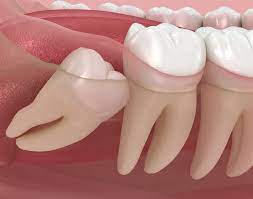Undergoing wisdom tooth removal is a common dental procedure, but the recovery process can vary from person to person. To ensure a smooth and swift recovery, it’s important to follow the right aftercare guidelines. The better you care for your mouth after the procedure, the quicker you’ll heal and the fewer complications you'll experience. This article offers essential tips for a smooth Wisdom Tooth Extraction recovery to help you navigate this important healing period effectively.
Follow Post-Procedure Instructions Carefully:
One of the most important steps in achieving a smooth recovery after wisdom tooth removal is following the post-procedure instructions provided by your dentist or oral surgeon. These instructions are tailored to ensure that your recovery goes as smoothly as possible. Here’s what you should keep in mind:
- Medication Usage: Take prescribed pain medications and antibiotics exactly as instructed to prevent infection and manage discomfort.
- Monitor for Complications: Keep an eye out for signs of complications, such as excessive bleeding, infection, or severe swelling. Contact your dentist if you notice anything unusual.
- Avoid Strenuous Activities: Rest and avoid strenuous activities for the first few days after your surgery to allow your body to focus on healing.
Manage Swelling and Pain Effectively:
Swelling and pain are common side effects of wisdom tooth removal, but with proper care, you can manage them effectively. Reducing pain and swelling will make your recovery period more comfortable. Here are some tips for pain and swelling management:
- Ice Packs: Apply an ice pack to your face in 15-minute intervals during the first 24 hours after the procedure. This helps reduce swelling and discomfort.
- Over-the-Counter Pain Relief: For mild to moderate pain, over-the-counter medications such as ibuprofen or acetaminophen can be used. Follow the instructions on the medication bottle for correct dosage.
- Head Elevation: Keep your head elevated while resting or sleeping for the first couple of days to reduce swelling.
Stick to a Soft Food Diet:
Eating the right foods during your recovery period is essential for your healing. After wisdom tooth removal, your gums and surrounding tissues will be sensitive, and eating hard or chewy foods could slow down your recovery. Consider the following:
- Soft Foods: For the first few days, stick to soft foods like mashed potatoes, yogurt, smoothies, and soups. These are easy to eat and won’t irritate your healing gums.
- Avoid Hot or Spicy Foods: Hot foods and beverages may irritate the surgical sites and should be avoided for the first several days. Spicy foods can also cause discomfort and increase the risk of infection.
- Stay Hydrated: Drink plenty of water, but avoid using straws, as sucking can dislodge blood clots and cause dry socket.
Maintain Oral Hygiene, but Be Gentle:
Good oral hygiene is essential for preventing infection and promoting faster healing after wisdom tooth removal. However, it’s important to be gentle and avoid disturbing the surgical sites. Here’s how to maintain oral hygiene:
- Brush Carefully: Brush your teeth gently, avoiding the extraction sites. Use a soft-bristled toothbrush to avoid irritation.
- Saltwater Rinses: After the first 24 hours, rinse your mouth with warm saltwater to keep the area clean and help prevent infection. Avoid swishing too vigorously, as this could disturb the healing process.
- Avoid Mouthwash with Alcohol: Alcohol-based mouthwashes can irritate the surgical site and delay healing. Stick to saltwater or a non-alcoholic mouthwash recommended by your dentist.
Prevent Dry Socket and Other Complications:
Dry socket is a painful condition that can occur if the blood clot in the extraction site is dislodged. This is a common concern for people recovering from wisdom tooth removal. To prevent dry socket and other complications, follow these precautions:
- Avoid Smoking and Straws: Smoking and using straws can create suction in the mouth, which can dislodge the blood clot. Avoid these activities for at least a week after your surgery.
- Be Careful When Eating: Be mindful of foods with small particles, such as seeds or nuts, as they can get stuck in the extraction site and potentially cause infection or complications.
- Stay Rested: Avoid any physical activities that could increase your blood pressure or cause excessive movement in the mouth. This helps keep the blood clot in place and reduces the chances of complications.
Follow Up with Your Dentist:
It’s essential to schedule a follow-up appointment with your dentist or oral surgeon after your Wisdom Tooth Extraction. These checkups ensure that your recovery is progressing well and that no complications are developing. Here’s what you can expect from your follow-up visit:
- Stitch Removal: If your dentist used dissolvable stitches, they may not need to be removed. However, if non-dissolvable stitches were used, you’ll need to have them taken out at your follow-up appointment.
- X-Rays or Checkups: Your dentist may take an X-ray to check that the extraction site is healing properly and there are no signs of infection.
- Address Concerns: If you have any concerns about your recovery, such as ongoing pain or swelling, this appointment is the perfect time to discuss them with your dentist.
Conclusion: Ensure a Smooth Recovery with Proper Aftercare
A smooth recovery after wisdom tooth removal is possible with the right care and precautions. By following your dentist’s post-procedure instructions, managing pain and swelling effectively, sticking to a soft food diet, maintaining oral hygiene, preventing complications like dry socket, and keeping up with follow-up appointments, you can help ensure that your recovery goes as smoothly as possible. Remember, if you have any questions or concerns during your recovery period, don’t hesitate to contact your dentist for guidance. With proper care, you’ll be back to your normal routine in no time.

